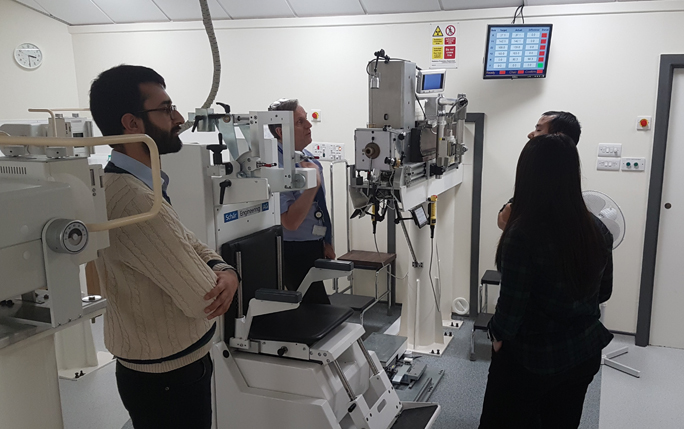OMA Fellows join forces to improve cancer treatment beam diagnostics

Last month OMA fellows Jacinta Yap and Navrit Bal, along with QUASAR members Roland Schnuerer and Hao Zhang from the Cockcroft Institute visited the Clatterbridge Cancer Centre (CCC), UK to meet with the Head of the Douglas Cyclotron, Dr Andrzej Kacperek. The CCC is treating patients with ocular tumors since 1989.
Building on already existing collaboration with CCC, the addition of ASI (Amsterdam Scientific Instruments) to this group represents another link between partners within our OMA network. This meeting marks the first of multiple intended visits, to carry out joint measurements with the 60 MeV proton therapy beamline.
Discussion during the visit included the current status of GEANT4 beamline simulations and the VELO setup. Further, an initial schedule to take measurements with VELO & Medipix3 with the CCC clinical beam was proposed. As both systems are designed by the same team at CERN, this example shows how both devices are applicable to be transferred from a fundamental research environment to a clinical facility.
Currently, Jacinta’s project largely focuses on simulation studies; beam behavior, integration of the VELO beam monitor and the correlation of the beam halo to the core. This is necessary to look at the interactions of the beam, sensors and propagation of the halo, as relevant for absolute dose delivery. This compliments Roland’s work focusing on the development of the hardware and software aspects of the VELO detector and as such, both work together closely to investigate the development of the VELO detector system into an online beam monitor for quality assurance.
Navrit’s project involves characterization and improvement of the Medipix3 chip, the readout and control software and a variety of applications using the chip. Typically x-rays and electrons are used with less than 0.1% of the energy than the protons in CCC and significantly lower flux which presents some challenges.
The Medipix3 chip is meant for very different applications. Thus, it enables direct beam profile measurements complementary to VELO measuring the beam halo. Additionally, it may be possible to measure the Bragg peak of the beam with the same equipment at micro meter resolution instead of mm or cm. These types of measurements have not been attempted before with Medipix3 detectors. If they work as expected, this would be a jump in the level of quality assurance for the CCC.
The group is looking forward to first measurements which are estimated to be performed between this spring and summer.